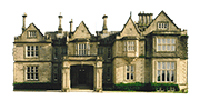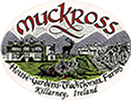The Herbert Family
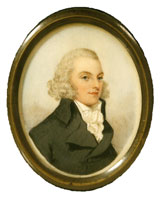
Henry Arthur Herbert
(1756-1821).
MP for County Kerry, 1806-1813
|

|
The Herbert
family connection with Kerry began in 1656.
In that year, Thomas Herbert of Montgomery
in Wales was appointed land agent for his
cousin, the third Lord Castleisland. Thomas
settled at Kilcow, near Castleisland and
his son, Edward, later leased the lands
around Muckross from the native
MacCarthys. Edward's son, also called
Edward, may have been the first member of
the Herbert family to actually live at
Muckross. Certainly he was living on the
Muckross Peninsula in 1735 with his wife
Frances, a sister of Lord Kenmare.
The Herbert family became very wealthy
during the 18th century due to the working
of the copper mines on the Muckross
Peninsula. However, it was not until 1770
that the family became the actual owners of
the lands at Muckross, following the death
of a MacCarthy relation. |
The Herbert family played
an active role in both local and political
life as part of the 'Establishment'. They
were also enthusiastic land improvers. When
Arthur Young visited Muckross in 1776 he
was fulsome in his praise of the
agricultural improvements initiated by the
then owner, Thomas Herbert. His son, the
first Henry Arthur Herbert, was responsible
for extensive plantations of forest on Torc
Mountain. He served as M.P. for Kerry from
1806 to 1813.
Charles Herbert succeeded his father, Henry
Arthur Herbert, in 1821. However, He died
shortly after, in 1823, leaving his widow,
Louisa Middleton, with six young children.
Louisa then moved, with her children back
home to Bradford Pererell in Dorchester.
Their eldest son, also called Henry Arthur
Herbert, was only thirteen years old when
his mother died five years later. |

|
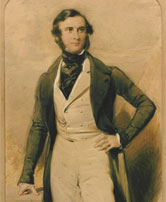
Henry Arthur Herbert
(1815-1866).
Painted by George Richmond in 1842
|
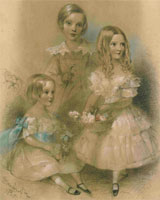
Three of the Herbert children, from
left to right, Charles (b. 1842),
Henry (b. 1840) and Eleanor (b. 1839).
By D. McDonald, 1845
|

|
Henry Arthur
Herbert was educated at Eton and graduated
from Trinity College, Cambridge in 1835.
While visiting Rome as part of a European
tour he met his future wife, Mary Balfour,
daughter of James Balfour and Lady Eleanor
Maitland. Henry Arthur and Mary were
married in 1837. They returned to Muckross
where they initially lived at Torc Cottage
(now demolished), in the shadow of Torc
Mountain. In 1839 they commenced the
building of the present Muckross House. It
was completed in 1843, just two years prior
to the Great Irish Famine.
Henry Arthur and Mary had four children,
Eleanor, Henry Arthur, Charles and Blanche;
they spent most of the famine years in
England. Their parents however, tried to
alleviate conditions for their tenants as
best they could. |
Henry Arthur was elected to
Parliament in 1847. He was appointed Lord
Lieutenant of the County of Kerry in 1853
and Colonel of the Kerry Militia in 1854.
In 1857 Palmerston selected him as Chief
Secretary for Ireland. However, he held
this office for only a brief period. The
Colonel remained an M.P. for Kerry until he
died in 1866. He is buried in Killegy
graveyard, close to Muckross village.
Following his death, Mary and her two
daughters retired to live in London.
Major Henry Arthur Herbert succeeded his
father, the Colonel. Soon after, he married
Emily Julia Charlotte Keane from County
Waterford. The marriage was not a success
and the couple divorced in the early 1880s.
They had three children, Henry Arthur
Edward Keane Herbert, Kathleen Keane
Herbert and Gladys Keane Herbert. |

|
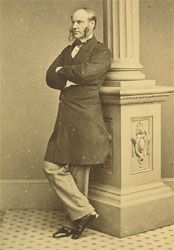
Colonel Henry Arthur Herbert
(1815-1866).
This photograph probably dates to the
1860s
|
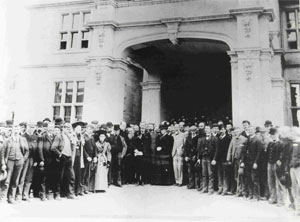
Members of the Herbert family and
their tenantry, photographed outside
Muckross House, probably 1896
|

|
The Herbert's
financial situation appears to have become
increasingly unstable during the latter
part of the 19th century. The visit of
Queen Victoria in 1861 may have contributed
to this. However, it is also likely that a
reduction in rents, coupled with a number
of possible ill-advised investments, may
have aggravated their problems. In 1897 the
Herberts were refused any further loans
from the Standard Life Assurance Company. A
year later, the Estate was forfeited to
that Company and the long association of
the Herbert family with Muckross was
ended.
But that is not the end of the story. In
September 1999 a Herbert family reunion,
organised by the Trustees of Muckross
House, was held at Muckross. It was the
first time in one hundred years that
Herbert family members had gathered
together at Muckross. The family members
now include widely scattered descendants,
from both England and America, many of whom
were previously unaware of each other's
existence. It gives us great pleasure to
think that we were instrumental in
reuniting the various strands of the family
again. An exhibition of watercolours by
Mary Herbert, wife of Colonel Henry Arthur
Herbert, was mounted for this special
occasion. |
Lord and Lady Ardilaun
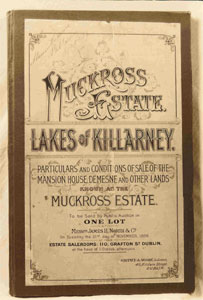
Front cover of the prospectus for
the sale of the Muckross Estate,
1899
|

|
The Standard
Life Assurance Company placed Muckross
House and Estate for sale at auction in
Dublin on the 21st November 1899. However,
bidding was slow and the vendors withdrew
the property. Then, on November 29th, it
was announced that Lord Ardilaun, a member
of the Guinness family and a prominent
Irish Unionist, had finally purchased the
Estate.
Lord Ardilaun was related through marriage
to the Herbert family. His wife Olivia was
a daughter of Jane, Countess of Bantry.
Jane was the youngest sister of Colonel
Henry Arthur Herbert.
The Ardilauns spent very little time at
Muckross and it was let out on an annual
basis as a shooting and fishing lodge. |
The Bourn Vincents
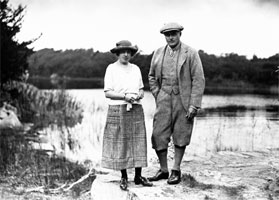
Maud Bowers Bourn Vincent and her
husband Arthur Rose Vincent. Muckross,
c. early 1920s
|

|
In 1910
Muckross was let to a wealthy American, Mr
William Bowers Bourn. He was owner of the
Empire Gold Mine and Spring Valley Water
Company of northern California. A short
time after, Mr Bowers Bourn's only child,
Maud, married Mr Arthur Rose Vincent of
Summerhill, Cloonlara, Co. Clare. Her
father purchased the Muckross property as a
wedding present for them.
Maud and her husband, Arthur Rose Vincent,
had two children, Elizabeth Rose (1915 -
1983) and Arthur William Bourn (1919 -
2012). The family travelled extensively,
but Muckross was their home.
During the years of Bourn and Vincent
ownership, between 1911 and 1932, over
£110,000 was lavished on improvements to
the Estate. In 1915 the Sunken Garden,
designed by Wallace and Co. of Colchester,
was laid out. The Rock Garden was developed
on a natural outcrop of Carboniferous
limestone and the Stream Garden was also
landscaped. |
It is
interesting that the Bourns chose a site
which reminded them of Killarney, when they
were building 'Filoli', their Californian
home (1916 - 1919). There, they decorated
their ballroom with murals depicting scenes
from around Muckross. The gardens at
'Filoli' were planted with clippings of
Yew, Holly and Myrtle, also from
Muckross.
Prior to his marriage, Mr Vincent had
served as a judge in the British Colonial
Service. Afterwards, he continued to play
an active role in public life. He served as
Deputy Lieutenant of County Kerry in 1914
and was then appointed High Sheriff in
1915. In addition, he served as a Justice
of the Peace.
Mr Vincent had sustained a hip injury when
young. As a result, he was considered unfit
for military service during the Great 1914
- 1918 War. However he did volunteer and
serve as an ambulance driver with the
French army on the Western Front. The
United States entered the War in 1917. The
British Foreign Office then dispatched Mr
Vincent to head the British Information
Service in Chicago. |

|
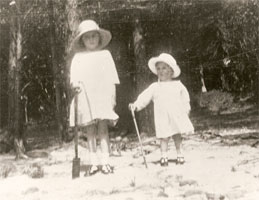
Elizabeth Rose Vincent (Rosie) with
her brother, Billy. Muckross, c.
1923
|
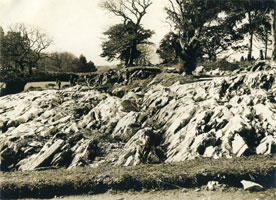
Rock garden under development at
Muckross
|

|
During the
Irish War of Independence (1919 -1921) Mr
Vincent appears to have served as an
'honest broker' between the IRA and the
British Government. He was appointed to the
Senate of the Irish Free State in 1931 and
resigned in 1934.
Maud had died of pneumonia in New York in
February 1929. She had been on her way to
visit her parents in California. Her
husband and children continued to live at
Muckross for a further three years. In July
1932 Mr Vincent wrote to Mr Eamon De
Valera, President of the Executive Council
of the State. He stated that it was his
intention, in association with his
parents-in-law, to present Muckross to the
Irish nation. With his parents-in-law, Mr
Vincent had come to the conclusion that
sustaining Muckross was going to become too
big an undertaking for any private
individual.
The Bourn Vincent Memorial Park Bill was
put before Dáil Éireann (Irish Parliament)
on December 7th 1932 and it took effect on
December 31st. Under this Act, the
Commissioners of Public Works were required
to 'maintain and manage the Park as a
National Park for the purpose of the
recreation and enjoyment of the
public'. |
Following its acquisition by the State, Muckross
House remained closed until 1964. Despite this, the
Park and Gardens were open to the public and were
visited by large numbers of visitors every
year.
Arthur Rose Vincent continued to retain a lively
interest in Muckross until his death in 1956. Like
Henry Arthur Herbert he is buried in the nearby
Killegy graveyard. His son, Arthur William Bourn
Vincent, has always maintained close ties with
Muckross throughout his life. Fleur Melville
Gardner (daughter of Elizabeth Rose Vincent and
niece of Arthur William Bourn Vincent) was a
frequent visitor to Muckross until her untimely
death in February 2011.
|
